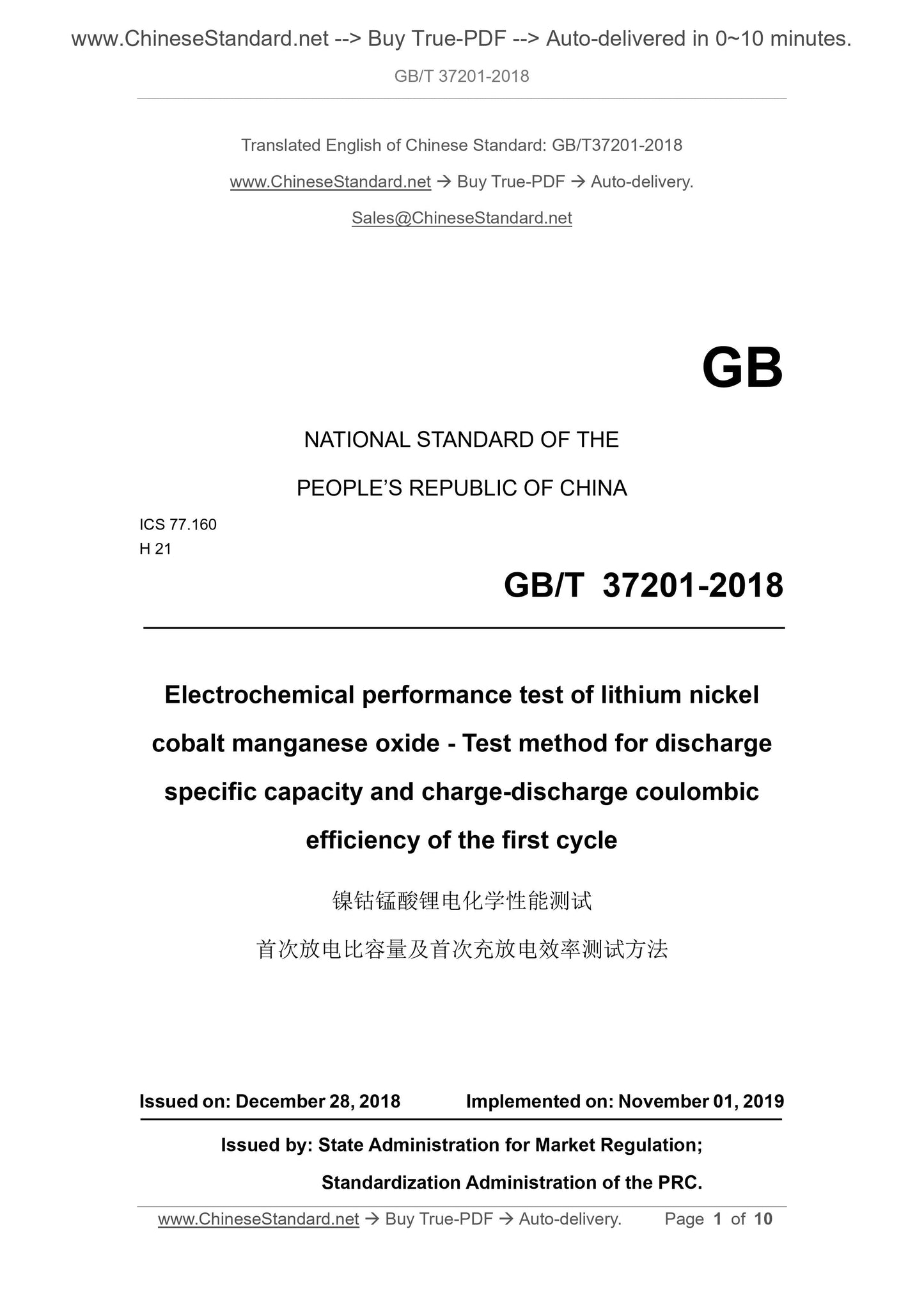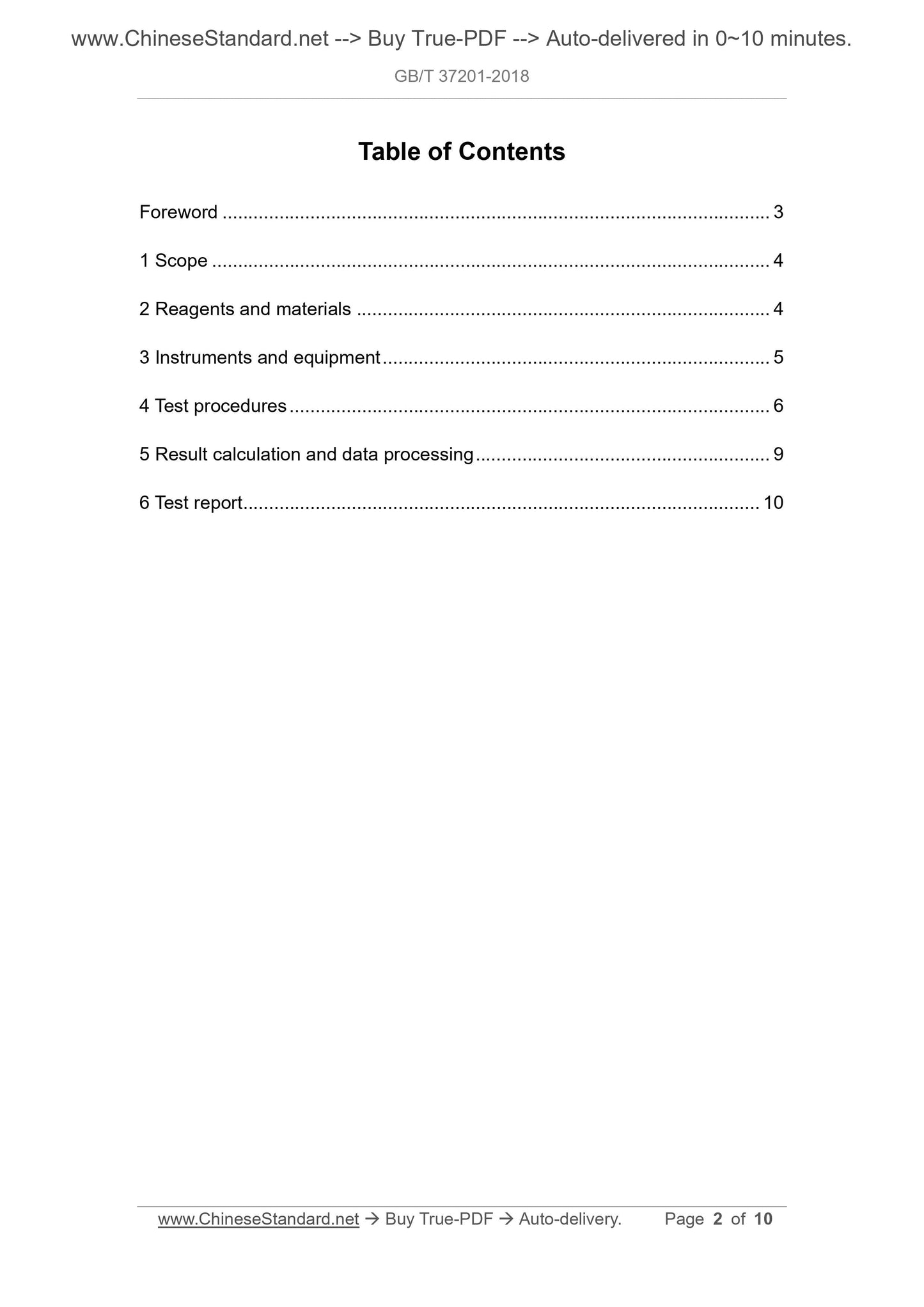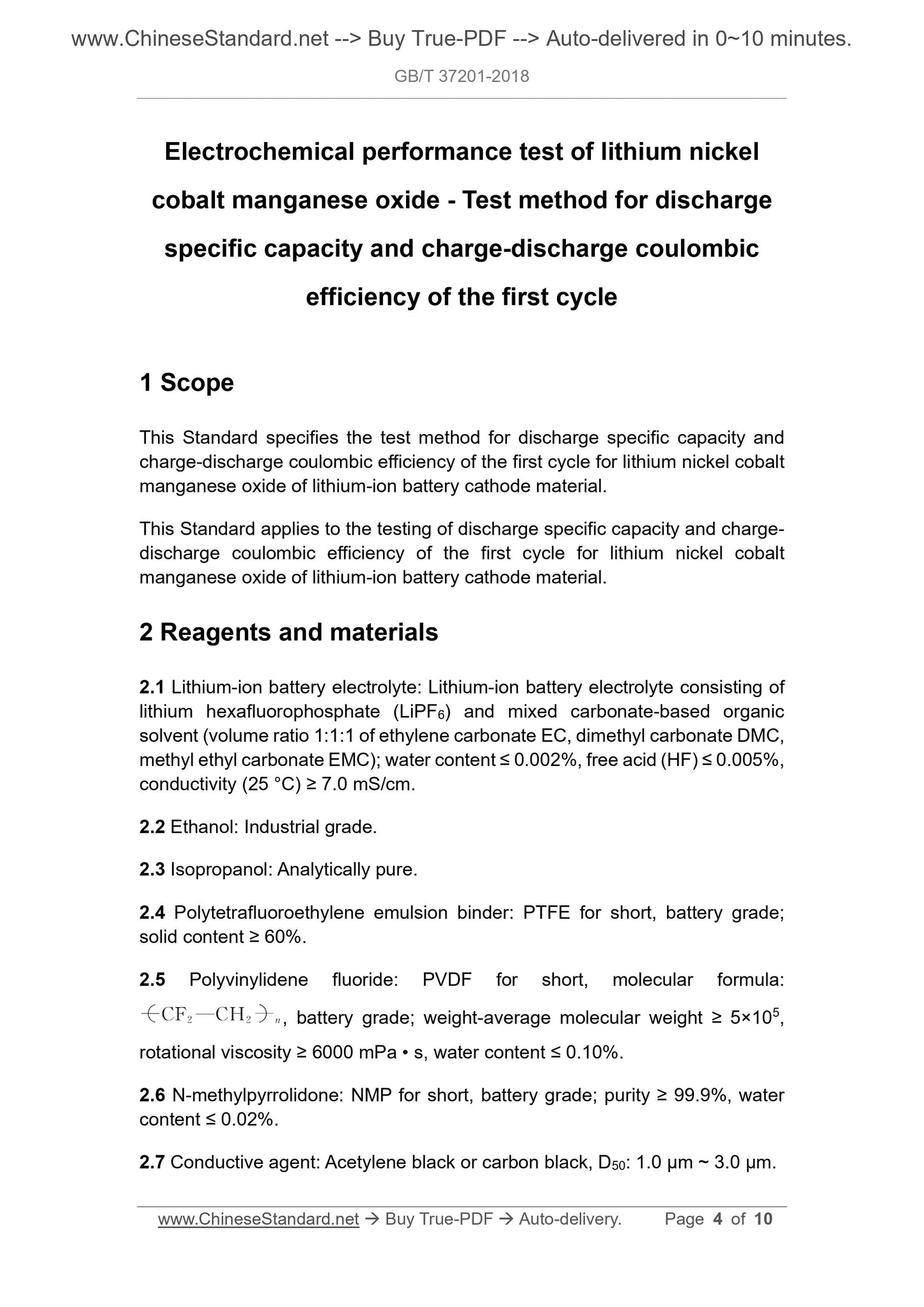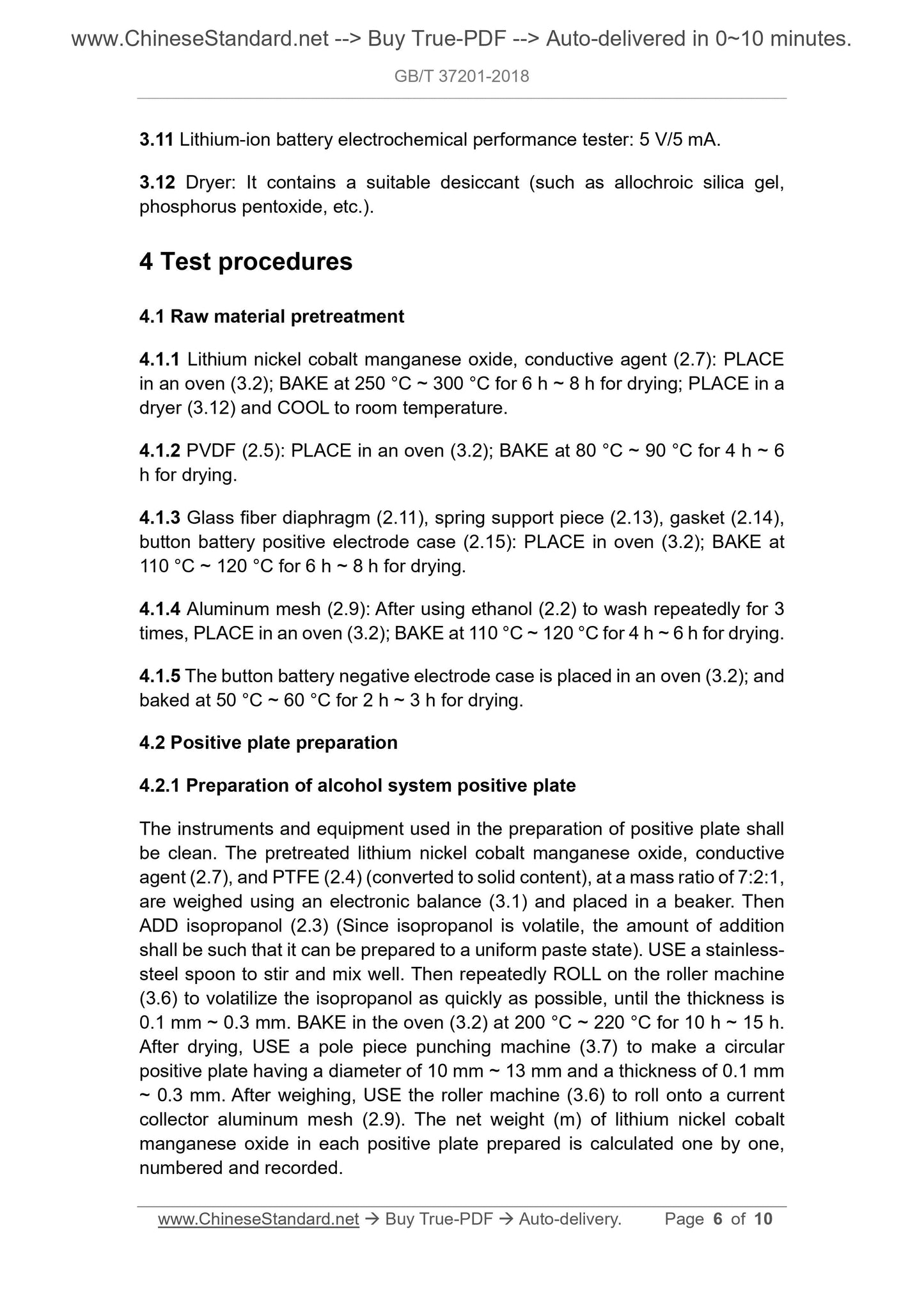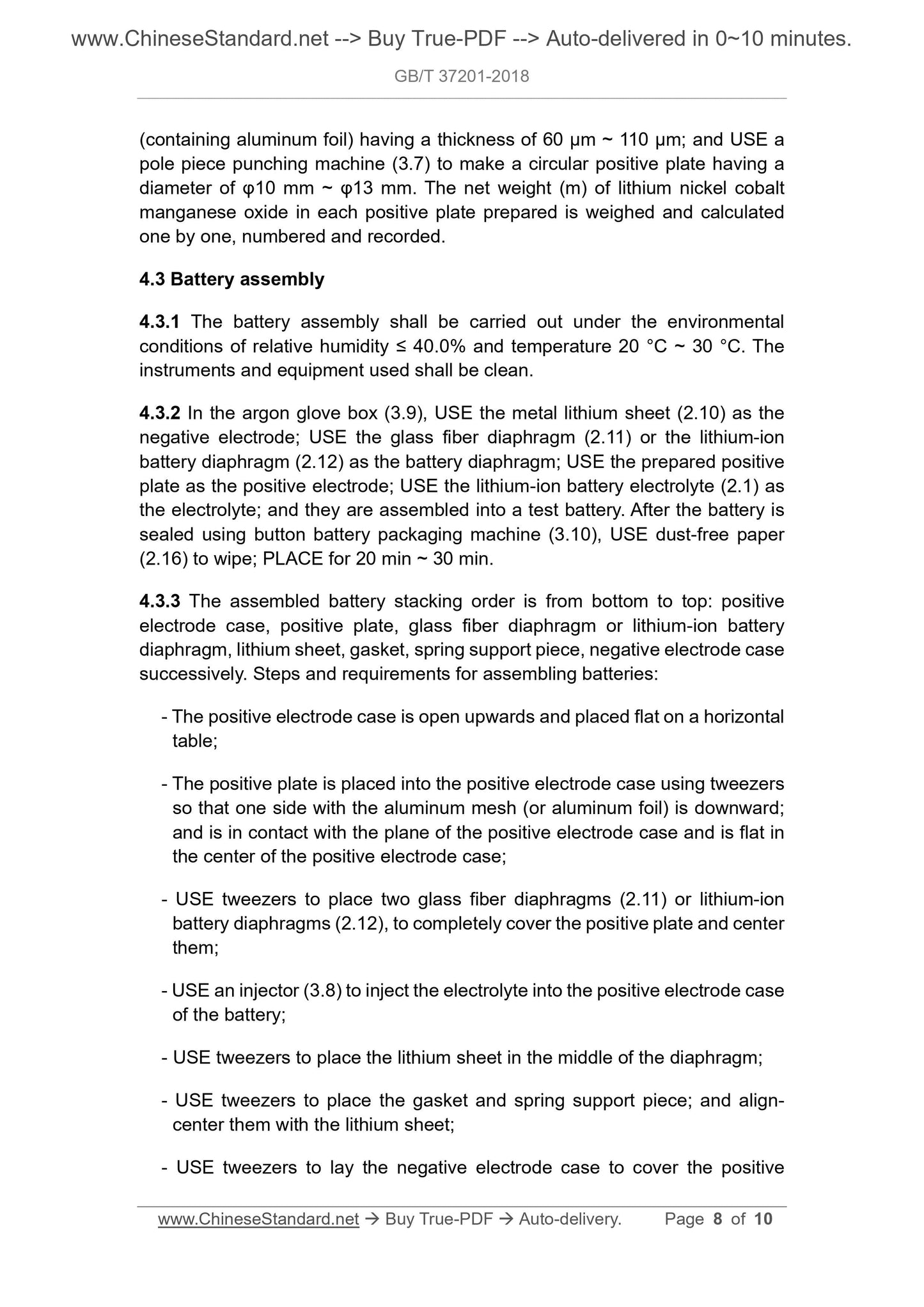1
/
of
5
www.ChineseStandard.us -- Field Test Asia Pte. Ltd.
GB/T 37201-2018 English PDF (GB/T37201-2018)
GB/T 37201-2018 English PDF (GB/T37201-2018)
Regular price
$115.00
Regular price
Sale price
$115.00
Unit price
/
per
Shipping calculated at checkout.
Couldn't load pickup availability
GB/T 37201-2018: Electrochemical performance test of lithium nickel cobalt manganese oxide - Test method for discharge specific capacity and charge-discharge coulombic efficiency of the first cycle
Delivery: 9 seconds. Download (and Email) true-PDF + Invoice.Get Quotation: Click GB/T 37201-2018 (Self-service in 1-minute)
Newer / historical versions: GB/T 37201-2018
Preview True-PDF
Scope
This Standard specifies the test method for discharge specific capacity andcharge-discharge coulombic efficiency of the first cycle for lithium nickel cobalt
manganese oxide of lithium-ion battery cathode material.
This Standard applies to the testing of discharge specific capacity and charge-
discharge coulombic efficiency of the first cycle for lithium nickel cobalt
manganese oxide of lithium-ion battery cathode material.
Basic Data
| Standard ID | GB/T 37201-2018 (GB/T37201-2018) |
| Description (Translated English) | Electrochemical performance test of lithium nickel cobalt manganese oxide - Test method for discharge specific capacity and charge-discharge coulombic efficiency of the first cycle |
| Sector / Industry | National Standard (Recommended) |
| Classification of Chinese Standard | H21 |
| Classification of International Standard | 77.160 |
| Word Count Estimation | 6,615 |
| Date of Issue | 2018-12-28 |
| Date of Implementation | 2019-11-01 |
| Issuing agency(ies) | State Administration for Market Regulation, China National Standardization Administration |
Share
